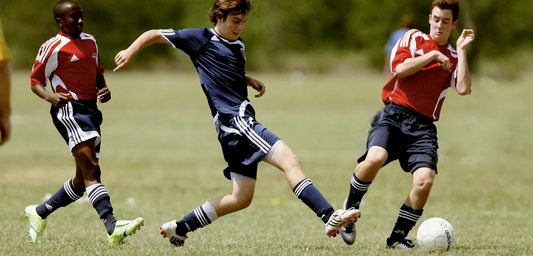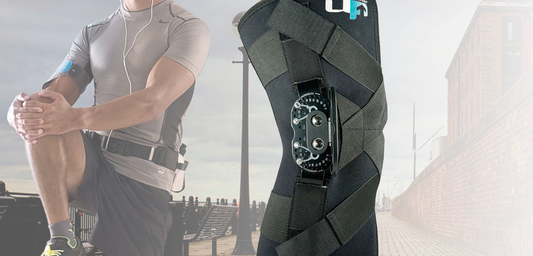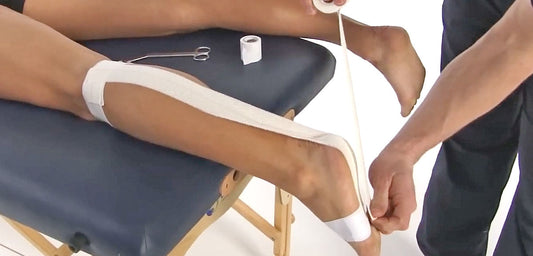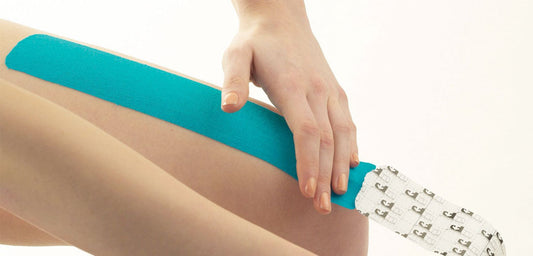
Five Tips For Preventing Walking Injuries
Share
1. Check your footprint

Poor foot biomechanics contributes to many common walking injuries including Plantar fasciitis, Achilles tendonitis, Shin splints, Knee pain as well as hip and back problems. The wet foot test gives you a basic idea of what type of foot you have.
If you overpronate, your foot rolls in, flattening your arch. This rotates your lower leg inwards which in turn causes your knee, hip and lower back to malfunction.
Prevent walking injuries by wearing orthotic-type arch support insoles such as the Ultimate Performance Support+ insole. These help control the position of your foot as you walk, not only avoiding overuse injuries but also making you more efficient as well.
2. Footwear
Make sure your walking boots or shoes fit properly and are suitable for the type of walking you are doing. Most good walking boots come in half sizes and some even have different widths. Badly fitting footwear allows your foot to slide around, resulting in blisters.
During a walk, your feet expand. If your boots or shoes are too tight then not only will your toes be very painful but it could lead to extensor tendonitis on the top of your foot, or nerve impingement. Always try on new boots with the socks you are going to wear. Also, allow plenty of room for your feet to expand if you intend to walk longer distances.
3. Tape up!
Prevention is always the best cure for blisters. Protect your feet by taping up with 2.5cm zinc oxide sports tape. Apply strips to the areas of your foot where you are likely to get blisters. For example, the instep, back of the heel and around your toes.
For added protection, apply blister plasters directly to the skin. Heat up the blister plasters in your hands first and make sure your foot is clean and dry before applying. Once properly stuck they should stay in place for a couple of days or more.
If you are wearing a heavy backpack, for example when hiking or military training then apply tape to protect other areas such as your lower back.
4. Drink water
Stay hydrated! Drink often, before you feel thirsty if possible. If you start to dehydrate then your blood volume drops. As a result, you are less able to function. In addition, you put yourself at risk of heat injury such as sunstroke.
The best bit of kit for walking is a hydration pack. These contain bladders which you fill with water, a drinking tube and a bite valve. They allow you to drink on the move without having to stop. If you are walking or trekking long distances then don’t forget to pack water purification tablets. You will be able to fill your water bottles up from fast-flowing streams, drop a tablet in, wait 30 minutes and you are good to go!
5. Stretch
Most walkers probably don't even think about stretching exercises. However, doing a few simple stretching exercises, before, during and particularly after a long walk can help prevent many common walking injuries.
In particular, stretching exercises for the quadriceps, hamstrings, gluteals, adductors and calf muscles are important. Weak and tired muscles tend to tighten up over time. This makes you more susceptible to strains and tears as well as postural problems.
6. Wear a hat!
Yes, wearing a hat is not just for winter! Wearing a hat or cap on hot sunny days helps prevent sunstroke by shading your head from direct sun, dissipating heat and protecting your eyes.
Above all, if you intend to go on a long walk, be prepared! You are unlikely to make the same mistakes twice. However, learning the hard way is much less fun!
7. Walking socks
The correct choice of socks for walking is important. Our sister site specialises in Walking & Hiking socks which help avoid foot injuries and make your expedition more comfortable. Features include:
- Moisture wicking fabrics
- Padding or cushioning
- Arch support
- Seamless designs
- Ventilation
- Odour control








